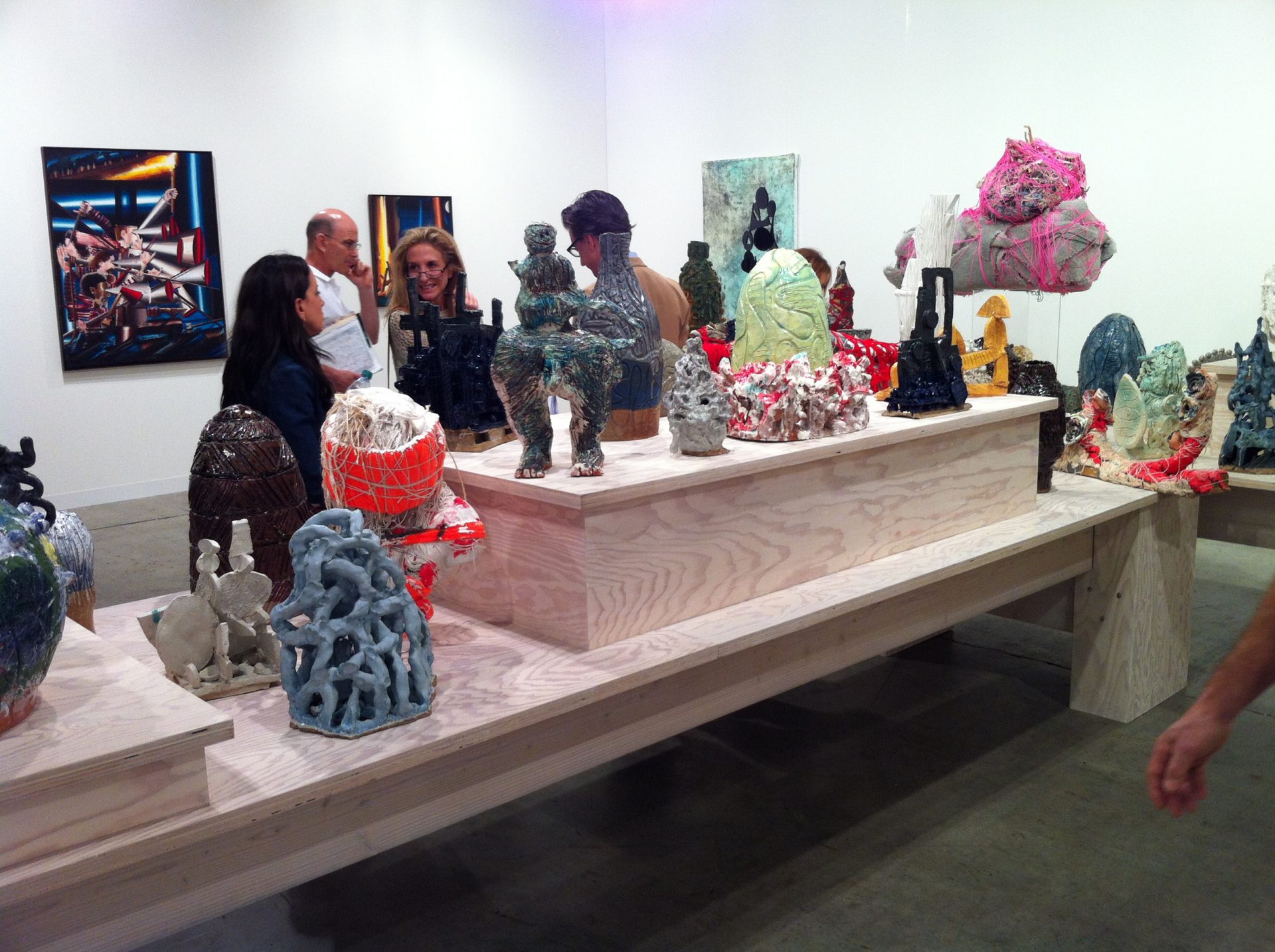“For more than a decade, German artist Jonathan Meese, 40, has provoked, seduced and irritated art audiences in Europe with raucous, libido-driven performances and dense, dissonant installations, packed with all sorts of detritus, fragmented photo imagery, graffiti-scarred painted surfaces and the like. All of his projects relay a sense of urgency—anarchical abandon with a dose of absurdist humor—the only unifying theme being art itself and the creative process. Propelled by sociopolitical undercurrents—especially those pertinent to Europe’s post-Cold War identity—and an acerbic critique of mass culture, Meese’s efforts convey a feverish, psychosexual energy. Despite the abject look of much of the work, there’s a Wagnerian grandiosity in its scope and scale.
It is peculiar, then, that his U.S. museum solo debut should focus on a rather narrow and insular part of Meese’s oeuvre: his sculpture. The 56 pieces currently on view at the Museum of Contemporary Art, North Miami, in “Jonathan Meese: Sculpture,” curated by the museum’s director, Bonnie Clearwater, do, however, provide a glimpse into Meese’s range of formal strategies, if not the spirit of his endeavor. One of the most imposing sculptures, Der Propagandist (2005), gives an idea of Meese’s unique brand of thoughtful provocation, wild imagination and penchant for the grotesque. Over 7 feet tall, the bronze figure is one of a half-dozen mythology-based works. Its most outlandish attributes are two pairs of twin phalluses—one emerging from its head and one from its back—and an erect phallus jutting from its crotch. The figure also features a distorted sheep’s face, two perky breasts, and hooves.”
art in and around South Florida
